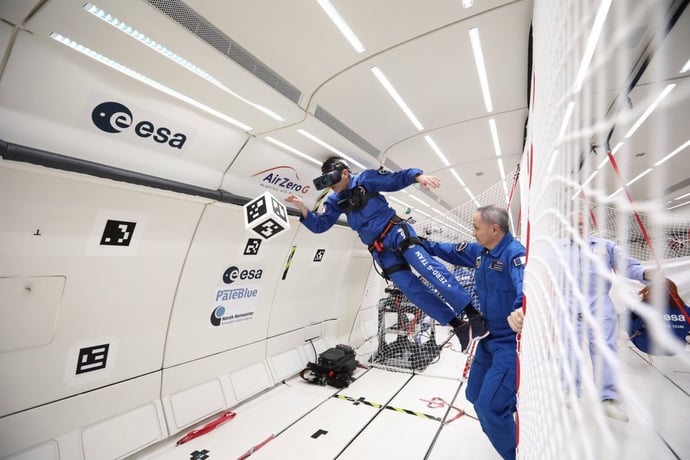Guest post by Lotta Veromaa, Isra Rab, Alma Hoque & Pauliina Lahti
The benefit of virtual reality for museums, in general, is the ability to offer immersive experiences: bringing history and art to life today in high-fidelity 3D. With VR, museum visitors get to interact with the immersive content, which brings the experience to a personal level and leaves a memory mark. It’s not just about experiencing the museum and its collection live, but rather adding another layer to the experience. The museum visit is not replaced but enhanced and complemented with immersive experiences.
To bridge history and today’s technology, our team decided to develop a virtual reality game for the National Museum of Finland using Varjo headsets. In this post, we’ll walk you through the background of the project and how it was achieved.
Ingeborg Tott VR game trailer – Virtual reality experience for a museum
Welcome to the 16th century – In virtual reality

Ingeborg is a virtual reality game made for the National Museum of Finland. It takes you to Häme Castle during the 16th century, where the player meets the forgotten warlord Ingeborg Åkesdotter Tott. The game concept won the Embrace Impact Hack-Art-On event, which was organized in autumn 2021 by Aalto Studios, Avatar’s Journey and Helsinki XR Center. The Hackathon was sponsored by Varjo, MAGICS, and the National Museum of Finland. The winning concept was created by Alma Hoque, Pauliina Lahti, Isra Rab and Lotta Veromaa.
During the Hackathon, we decided to develop a gamified experience that combines interaction with space and objects. The idea of Ingeborg as the star of the game fascinated us all: the powerful, feared military commander was a rich, independent woman and a lover of science and religion. However, there is little information available about this interesting character which caused some headaches for the team, but on the other hand, freed up creative ideas.


First step: Research
While starting to build the game functions, we did research on Ingeborg Tott and the medieval culture in Häme castle and in the Nordics. The museum was helpful in guiding us to talk with the right people. During the development process, we researched various new technologies that can be used in these types of projects.
Building the environment with 3D point cloud scans
Our game gives users the opportunity to visit Häme Castle’s Guards’ Room, Artillery Room and the King’s Hall. The premises are completely realistic in size. They were built based on 3D point cloud scans of Häme Castle. Only the most central room in the game, the artillery room, was expanded for usability.


The environment textures were inspired by the Holy Cross Church in Hattula, where Ingeborg Tott is said to have visited. Some motifs are adaptations of the Turku Castle wall paintings. Ingeborg Totts’s Coat of Arms, seen in the game is an adaptation of a half-visible drawing in Turku castle, said to be of her.


Building VR characters

The game starts in the Guards’ Room, where the guard tells the plot of the game and the player learns to move in the virtual space. The guard’s character is an armour belonging to the National Museum. We scanned the armour, using an ArtecLeo 3D scanner, to get the best reference for the 3D model of the guard.

The game centers around the Ingeborg Tott statue that comes alive in the Artillery room with the help of actress Alma Pöysti. The movements were captured using the Xsens Motion Capture suit. It gave the most accurate movements for the character. The statue was 3D modelled based on research with medieval and classical statues, all down to details such as hairstyle. The dress is made from an original medieval pattern and is built using Clo3D and Blender.

Modelling medieval objects
With help from the museum, we researched medieval objects. Each of the objects reflects an aspect of Ingeborg’s character. For example, coins symbolize her wealth. The coin used in the game is modelled based on a coin in the museum collection. The book represents her love for books and owning a printing press. Sundial for science and curiosity, and die for games that were popular during the time. The die in the game is also modelled after a medieval die in the museum collection.



Developing with Varjo Aero and Unity
In addition to Varjo and Unity, we used a plethora of software and technologies to create Ingeborg Tott VR. Most of the assets were made in Blender, then UV mapped in Maya and textured in Substance. In addition to this, we used 3D scanning and MoCap.
We were developing for Varjo for the first time. The experience using Varjo was a surprisingly easy task with the guidance from Varjo’s homepage and didn’t require any professional level of knowledge.
Varjo integrates with Unity smoothly, as Varjo supports the OpenXR system and has its own XR plugin management for Unity. The set-up was easy and fast with the help of Unity’s and Varjo’s clear manuals.
We used VRIF (Virtual Reality Interaction Framework) as a base for the player’s movements and basic actions in the game. Because Varjo supports SteamVR and can be used with Valve Index controllers, this framework worked smoothly.
In the Ingeborg Tott VR game, using the Varjo Aero headset really enhances the experience and makes it real. The real physical world is fully blocked out. The feeling of space and the textures take you out of the present day. The lightness of the headset made the user experience good even for a bit younger audience.

In the future, we’d like to see more of our history brought to life in immersive and interactive ways. We believe this would help us understand our past and learn from it.



